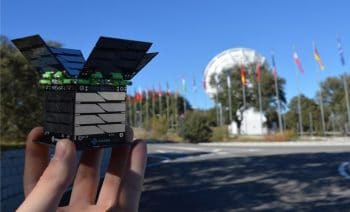- FossaSat-1, Spain’s first open source picosatellite is scheduled for launch in Q3 of 2019.
- The project aims to provide free and open source IoT communications for the globe using inexpensive LoRa modules
- The satellite’s development and launch will cost under EUR 30000 (approx. $33313)

Fossa Systems, a non-profit youth association based out of Madrid, Spain is developing the country’ first open source picosatellite, which they plan to launch into orbit in October 2019.
Sized at only 5x5x5cm and weighing only 250g, it will be one of the smallest satellites ever launched into space and it will create the world’s first free and open source IoT network, the association writes on its official website.
Dubbed FossaSat-1, the satellite will provide free IoT connectivity by communicating LoRa RTTY signals through low-power RF-based LoRa modules.
The project plans to test the new LoRa spread spectrum modulation using less than $5 worth of receivers, with the goal of democratizing telecommunications worldwide.
As per Fossa Systems, the satellite’s development and launch will cost under EUR 30000 (approx. $33313).
“Our objective is to democratize access to space, both regarding telecommunications and access to in-orbit hardware by using picosatellites that can fit in your pocket and can be launched for less than the cost of a car,” the association said.
“FossaSat-1 will provide free and open source IoT communications for the globe using inexpensive LoRa modules, where students will be able to communicate with a satellite for under EUR 20,” it added.
Main Components
The satellite is being built in a cleanroom at Rey Juan Carlos University and has undergone thermovacuum and vibration testing at the facility.
The design includes an onboard computer (OBC) based on an ATmega328P-AU microcontroller, an SX1278 transceiver for telecommunications, and an electric power system (EPS) based on three SPV1040 MPPT chips and the TC1262 LDO. The satellite also uses a TMP100 temperature sensor, an INA226 current and voltage sensor, a MAX6369 watchdog for single-event upset (SEU) protection, a TPS2553 for single-event latch-up (SEL) protection and various MOSFETs for the deployment of solar panels and antennas.
It is powered by 28 percent efficient gallium arsenide TrisolX triple junction solar cells.
FossaSat-1 is being developed using free and open source ethics and the code has been made freely available on GitHub.
With inputs from Hackaday














































































